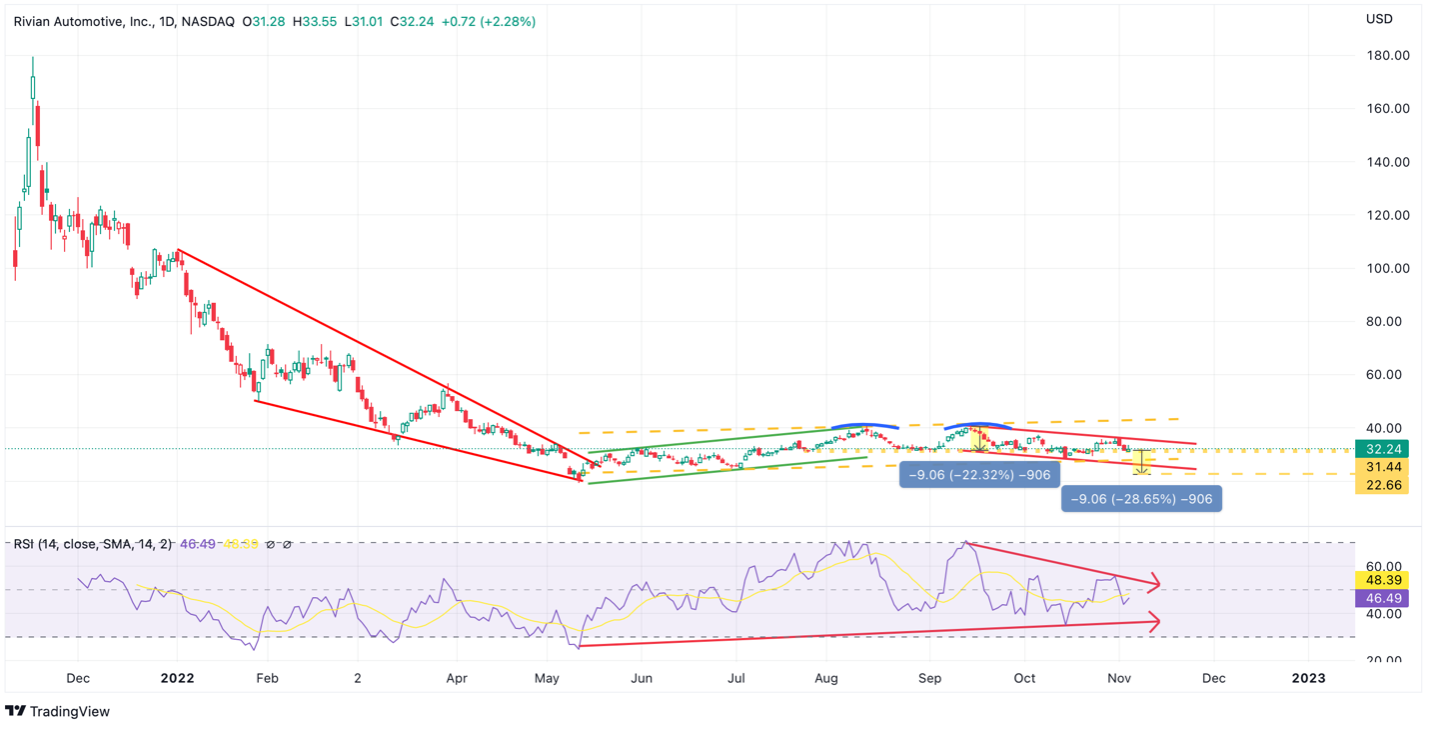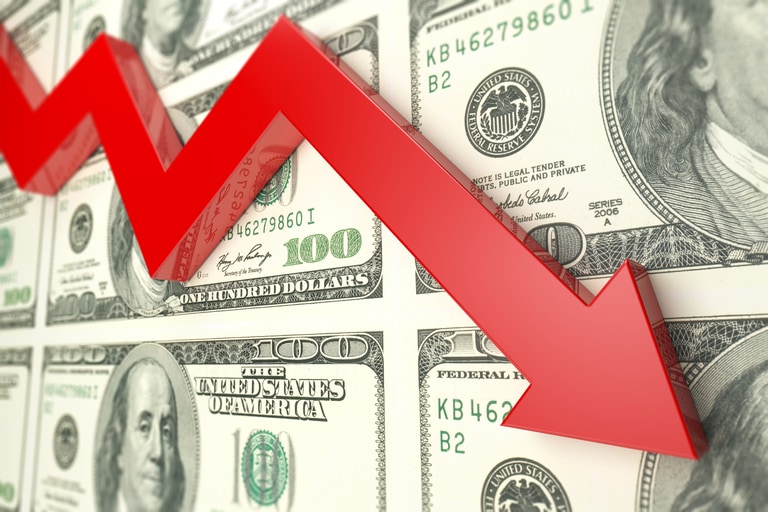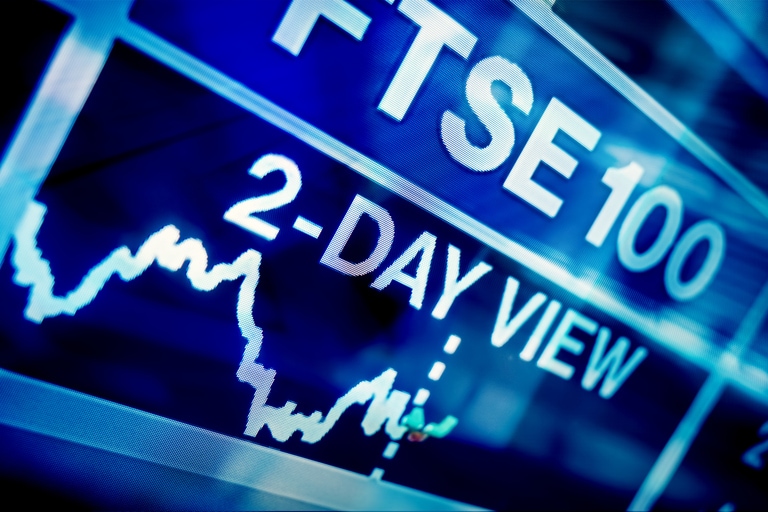Ahead of US electric carmaker Rivian’s [RIVN] third-quarter earnings announcement after markets close on 9 November, analysts are forecasting a sharp increase in sales and a narrowing of losses.
Consensus estimates are for a loss of $1.78 per share, based on a poll of analysts by Zacks. If accurate, that would mark a 76.8% improvement year-on-year, and a 5.8% uptick from the previous quarter. They also anticipate sales ballooning from $1m a year ago to $513.89m.
The upcoming report could also bring positive news on the Inflation Reduction Act, which came into effect in the US in August and contains various incentives and tax breaks for low-carbon companies.
Investors will hope that this week’s earnings can live up to analyst expectations after a month of negative headlines for Rivian. Shares in the California-based electric automaker have struggled this year, falling 69.1% year-to-date and 8.5% over the past week.
Recall spells bad news
In October, Rivian recalled 12,200 of the 13,000 trucks it has produced since it began making them in late 2021. The recall was due to a loose nut defect which can, in extreme cases, cause drivers to lose control of the vehicle.
The repair only “takes a few minutes,” according to the company, and while Rivian expects to have the recall complete within 30 days, it is yet another bit of bad news. Early this year, Rivian’s main investor, Amazon [AMZN], announced it would be buying the Ram Pro Master van produced by rival supplier, Stellantis [STLA]. Following the news, Rivian shares fell as much as 3.7% below their initial IPO price of $78. On Friday 4 November, the stock closed at $31.99, down 59% from the IPO price.
“The last thing any Rivian investor wants to see in a shaky market is a broad recall that hurts the brand,” said Wedbush analyst Dan Ives. Rivian shares fell 7.3% on 10 October following news of the recall.
Production ramp-up?
Rivian shares slipped following its Q2 earnings, which came in slightly below analyst expectations. Analysts polled by Zacks had forecast losses of $1.67 per share, and were disappointed with the $1.89 reported. Sales of $364m, however, exceeded expectations of $337.7m.
Rivian also lowered its annual earnings guidance, with expected losses rising from $4.75bn to $5.45bn. The adjustment was attributed to “raw material inflation, the LCNRV [lower of cost or net realisable value] adjustment, expedited freight expenses, and supply chain challenges.”
Ramping up production was the key focus of the business, according to its Q2 shareholder letter. “Supply chain constraints” were believed to be the key ongoing limiting factor of production volumes. Full-year production guidance of 25,000 vehicles was kept unchanged.
Investors will be on the lookout for any adjustments in production or earnings guidance in the upcoming report. Reductions in either measure would be likely to weigh on the share price.
Rivian stock in a bearish reversal pattern
“Rivian Automotive has been dead money for some time, with the shares trading sideways and consolidating since mid-May after falling sharply from its debut in late 2021,” said Michael Kramer, founder of Mott Capital Management.
Kramer told us: “The stock formed a bullish reversal pattern, called a falling wedge, between January and May 2022. But the shares have consolidated sideways instead of breaking out and rising. This tends to be a bearish sign and suggests the decline may not be over.”

“On top of that, the stock formed a bearish double-top pattern when the shares rose to around $41 between mid-August and September. Now the equity is hovering and testing support at approximately $32. Should the stock break that support at $32, it could result in the stock falling to around $22.50,” Kramer said, adding that it could rally to $41 if it stays above that support level.

Other analysts, however, are taking a bullish stance. Of the 20 analysts polled by CNN Money, 11 gave Rivian a ‘buy’ rating. Of the remainder, one provided an ‘outperform’ rating, five said ‘hold’, two ‘underperform’ and one advised to ‘sell’. Their median price target of $50.50 implies a 57.8% upside for the stock over the next 12 months. However, the low estimate of $24 would see the stock fall by 25%
Disclaimer: CMC Markets is an execution-only service provider. The material (whether or not it states any opinions) is for general information purposes only, and does not take into account your personal circumstances or objectives. Nothing in this material is (or should be considered to be) financial, investment or other advice on which reliance should be placed. No opinion given in the material constitutes a recommendation by CMC Markets or the author that any particular investment, security, transaction or investment strategy is suitable for any specific person. The material has not been prepared in accordance with legal requirements designed to promote the independence of investment research. Although we are not specifically prevented from dealing before providing this material, we do not seek to take advantage of the material prior to its dissemination.







